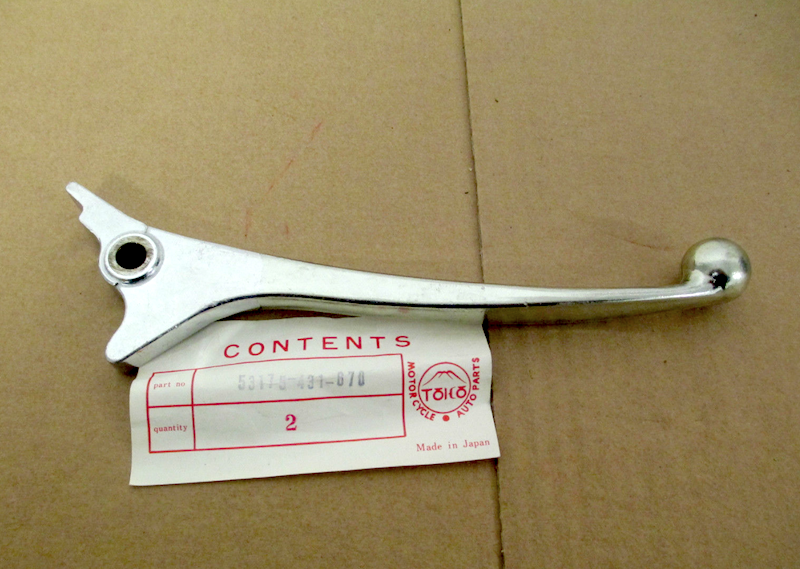GL1000s are blessed with very well engineered braking systems…especially given their vintage and weight. Triple disk setups were certainly not the norm in 1975 when the GL1000 debuted.

Honda overcame the limitations of their earlier pivoting caliper holder design (like those fitted to the first 750 Fours) by providing a true “floating” front caliper mount even though there is still only one piston per front caliper. The rear calipers were treated to the luxury of two opposed pistons. I find that even by contemporary standards, the GL1000 has excellent brakes with good power, initial bite and feel. In fact, the ability to modulate the GL1000 brakes is superior to many subsequent designs. With proper maintenance, GL1000 brakes perform very well and generate very few operational problems. Religiously changing your brake fluid every two years will prevent many major brake system headaches.
Here’s one odd brake “problem” I see on occasion: the symptom is a firm front brake lever with too much travel before the firmness is felt. Described another way…the lever ends up very close to the handlebar grip before significant braking force is generated. The rider feels uncomfortable with this because even though there seems to be plenty of front braking power (no “mushiness”), there’s not a comfortable margin of reserve to pull the lever back much further. Usually, the rider / owner will request that I perform “brake bleeding.”
However, on the bikes in question, the entire front brake system was already properly bled, the hoses weren’t spongy and there was no performance issue with the function of the master cylinder internals (seals, piston, etc).
Here’s the explanation. Remember, these bikes are 25+ years old. If you have a high mileage bike and still have the original front brake lever, you should know that the lever itself is a wear item that needs periodic replacement. The lever is made of a relatively soft alloy. The protruding “tang” of the lever which actuates the end of the master piston is no match for the hardness of the piston. Hence, the “tang” wears down gradually with use. This changes the brake actuation point…gradually moving it closer and closer to the handgrip. Since the lever is a non-adjustable design, the only option is replacement.
Fortunately, the lever is inexpensive and easy to replace. I recommend the OEM lever, but good aftermarket items are available which are virtually indistinguishable from the original. A small dab of caliper grease on the contact point between the lever and the master piston is a good idea to make the lever action smooth.
One final note: there is a small rubber bumper (looks like a short section of small diameter vacuum hose) which limits outward travel of the lever. this prevents rattling and limits excess free travel before the “tang” contacts the master piston. Most people overlook this important item during a master cylinder overhaul, but it should be checked and replaced as necessary. It is held in the lever bracket by a small retainer plate. The brake lever pivot bolt passes through this small retainer. Make sure these parts are assembled correctly…I often see them missing or installed incorrectly Also, if your rubber bumper is shot, you can order a new one from Honda or substitute a short section of vacuum tubing of the appropriate diameter.



Hi mate, I just got my first GL1000, and I’m a keen but very green amateur mechanic. The bike’s been sat for 10 years with little use, but indoors and dry. I don’t think the fluid got changed in that period, but was changed just before sale. The front brake is odd. When you FIRST squeeze it after not using it for say 20 secs, it travels far before engaging. But if you release and squeeze again immediately, it engages much earlier/further from the bar where I’d normally expect it. Leave it a bit, go again, and you’re back to square one near the bar. Any ideas where to start? Thanks a million for all your tips!
Tom that sounds like air in the line that didn’t get flushed out when it was bled. More bleeding is the answer.
Tom:
More bleeding might help, but if you have good lever pressure followed by slow travel pf the lever to the bar …the master cylinder seals are probably in need of replacement.